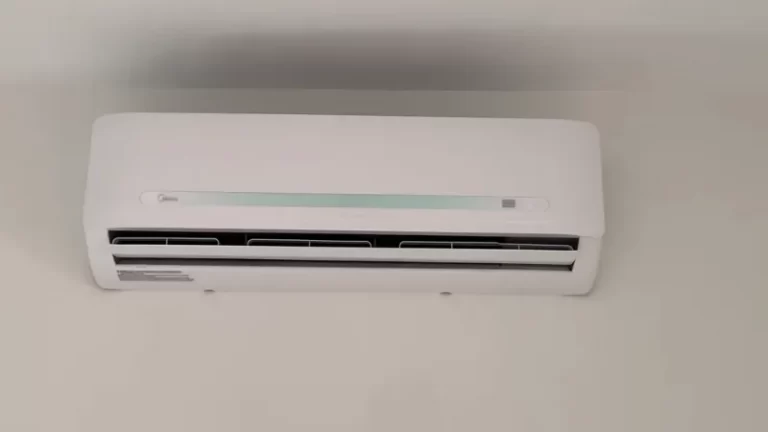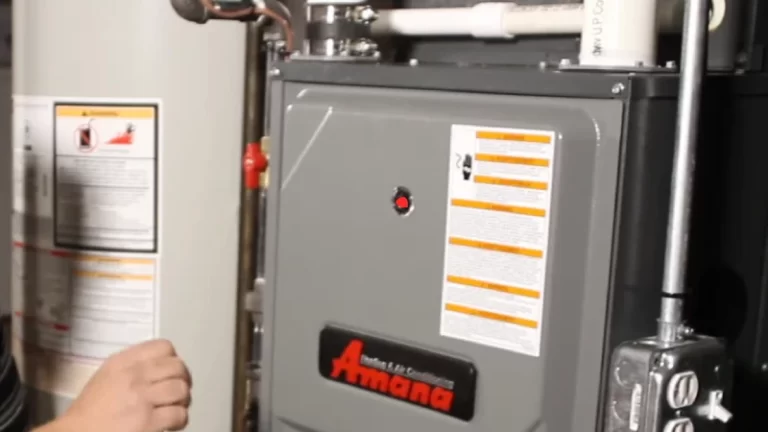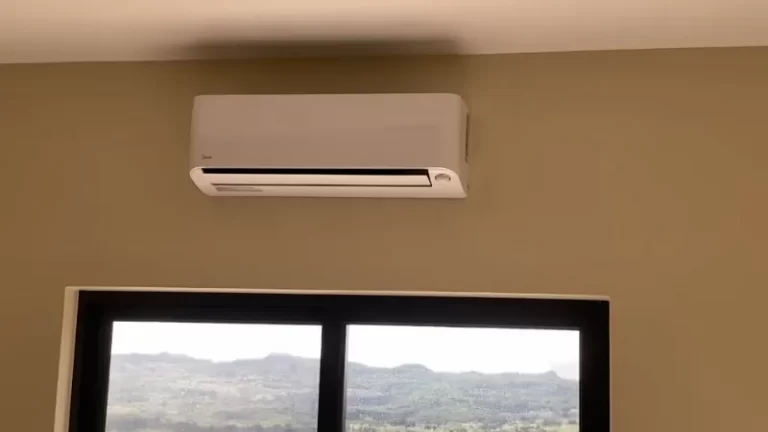Mold in Air Conditioner Vents? Black Mold? How to Clean? [Step-by-Step Guide]
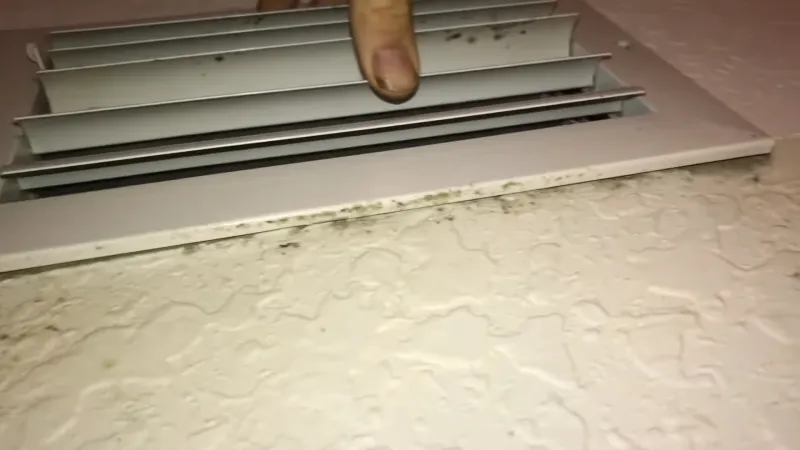
Mold growth in air conditioner vents can cause serious health problems if left unchecked. Exposure to mold spores can lead to respiratory issues, allergic reactions, and even infections. Therefore, it is crucial to clean mold from air conditioner vents regularly to prevent its growth and spread.
In this article, we will provide a step-by-step guide on how to clean mold from air conditioner vents and prevent its reoccurrence. By following these steps, you can ensure a healthy and comfortable living environment for you and your family.
You'll Learn About
Why Does Mold Grow in Air Conditioner Vents?
There are several reasons why mold can grow in air conditioner vents. There are many sources of moisture that lead to the growth of mold in air conditioner vents.
This includes moisture that seeps in from the air vents themselves, from bathroom and kitchen floors, and through cracks in the home’s exterior. There are also certain items that can become moldy if they are stored for a long time, like food, books, clothes, and electronics.
When the moisture in the environment gets trapped in the air vents, this triggers the growth of mold.
Moisture Seeping
This is one of the main cause of mold growth in air conditioner vents. Mold spores in the air get attached to the moisture in the air vents.
Moisture From Floor
If moisture collects in the air vents, this will also trigger the growth of mold. Moisture from the bathroom and kitchen floors can lead to the growth of mold in the air vents.
Items That Can Get Moldy
This is usually when food is stored for a long time.
These are some common sources of mold in air conditioner vents. Additionally, it is essential to clean mold from air conditioner vents regularly to ensure good indoor air quality. If you follow these tips regularly, your home will be free of mold growth.
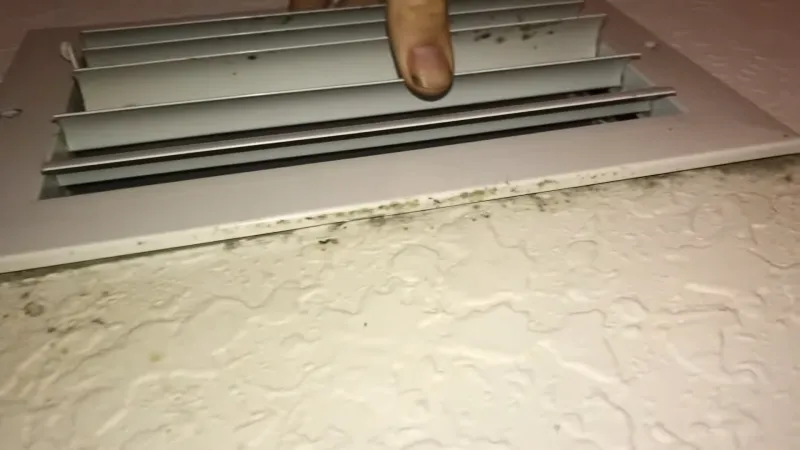
Is Mold in Ac Vents Common?
Mainly indoor AC unit is the place where you will experience a lot of mold growth. Air conditioner vents are the major pathway by which the air is let in or out of the AC unit. Therefore, AC vents are the most common places to encounter mold growth.
Mold is a common problem in the environment. It usually grows in humid and warm conditions. When mold comes into contact with moisture, it usually grows to form spores. These mold spores then get inhaled by a person.
This condition is called “Allergic Rhinitis”. Many symptoms like breathing problems, itchy eyes, nose and throat, cough, sneezing etc can occur due to this mold and all you need is to take the treatment to reduce the symptoms.
What Are the Symptoms of Mold Growth in Air Conditioner Vents?
If mold grows in air conditioner vents, it can be very dangerous for those that are exposed to it. This includes the elderly, pregnant women, young children, and those with lung and immune system conditions like asthma.
Common symptoms of mold growing in air conditioner vents include shortness of breath, sore throats, coughing, eye irritation, skin rashes, and severe headaches. Mold may even lead to health issues like allergic reactions and asthma attacks if it is inhaled.
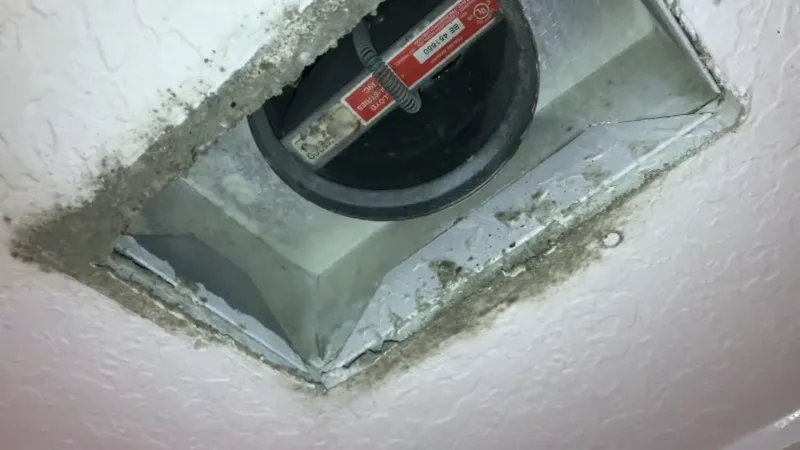
Cleaning Mold From Ac Vents
Mold growth in air conditioner vents can pose a serious health hazard if left unaddressed. Therefore, it is crucial to clean mold from air conditioner vents regularly to prevent its growth and spread. Here are some steps to clean mold from air conditioner vents:
Turn Off the Ac Unit
Before starting the cleaning process, ensure that the AC unit is turned off. This will prevent any accidental injury or damage to the unit
Wear Protective Gear
When cleaning mold, it is essential to protect yourself. Wear gloves and a mask to prevent direct exposure to the mold spores, which can cause respiratory problems
Remove Air Vents
Unscrew the air vents from the AC unit and submerge them into a cleaning solution made of laundry detergent and water. Leave them to soak for about 15 minutes
Clean the Vents
Use a HEPA vacuum to clean out the inside of the air vents, removing any debris or dust. After that, use a rag soaked in the same detergent and water solution to clean the inside of the vents
Clean the Ducts
If the mold is also present in the ductwork, you can use a flexible mop to clean it out. Use a chemical cleaner that is specially formulated for duct cleaning
Let the Vents Dry
After cleaning, leave the air vents to dry before replacing them. This will prevent any moisture from accumulating, which can lead to the growth of mold
Cleaning mold from air conditioner vents is essential for maintaining good indoor air quality and preventing respiratory problems. Regular cleaning and maintenance of the AC unit and ductwork can help prevent mold growth and ensure the efficient functioning of the unit.
Steps to Clean Mold From Air Conditioner Vents
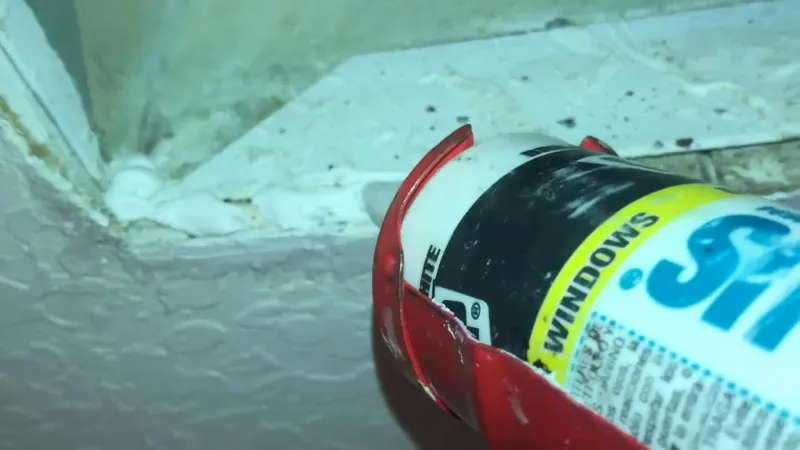
Turn Off the Ac Unit
Before starting the cleaning process, it is important to turn off the AC unit. This will prevent mold spores from being circulated throughout the house while cleaning. Additionally, turning off the unit will ensure safety while handling electrical components during the cleaning process
Wear Protective Gear
Mold spores are harmful to health and can cause respiratory problems if inhaled. Therefore, it is important to wear protective gear while cleaning mold from air conditioner vents. Protective gear includes gloves, a face mask, and safety goggles to prevent exposure to mold spores
Remove Air Vents
Once the AC unit is turned off and protective gear is on, the next step is to remove the air vents. Most air vents can be easily removed by unscrewing them with a screwdriver. Once the vents are removed, place them in a large basin of warm water and detergent solution
Clean the Vents
Submerge the air vents in the cleaning solution for at least 15 minutes. This will help to loosen the mold and other debris from the vents. After soaking, use a HEPA vacuum to remove any remaining debris from the inside of the vents.
This will ensure that all dirt and mold spores are removed from the vents.
Clean the Ducts
After cleaning the vents, it is important to clean the ducts as well. Use a flexible mop and a chemical cleaner to clean the ducts thoroughly. This will ensure that any remaining mold spores and debris are removed from the ducts.
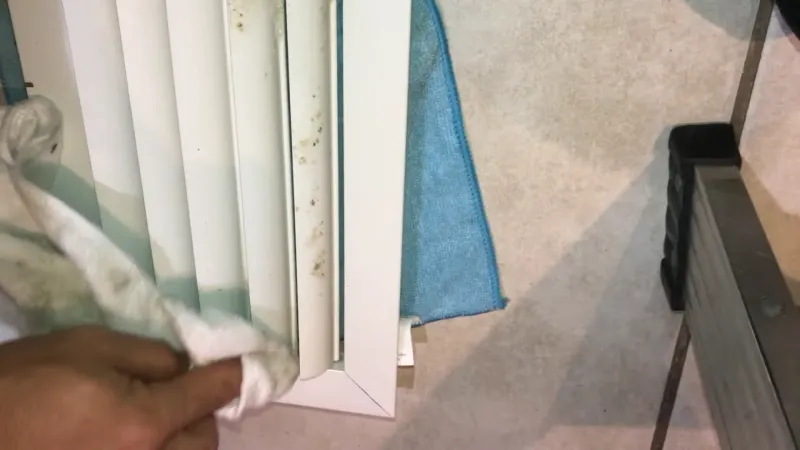
Let the Vents Dry
After cleaning the vents and ducts, allow the vents to dry completely before reinstalling them. This will prevent the growth of new mold in the vents
Regular cleaning of air conditioner vents is important to maintain good indoor air quality and prevent mold growth. By following these steps, you can clean mold from air conditioner vents and prevent its reoccurrence. Additionally, it is important to maintain proper ventilation and control humidity levels in the home to prevent the growth of mold in the future.
Causes of Black Mold in Air Conditioner Vents
High Humidity
Black mold thrives in moist environments, and high levels of humidity in the air can provide the ideal conditions for its growth. This is especially true in air conditioning systems, where stagnant air and poorly ventilated ducts can create pockets of high humidity that are ideal for mold growth
Leaks and Condensation
Leaks and condensation can also provide the moisture that black mold needs to grow. This can occur in air conditioning systems due to poor insulation, faulty ductwork, or a lack of proper ventilation
Poor Maintenance and Cleaning
Neglecting to clean and maintain air conditioning systems can also contribute to the growth of black mold. Dust, dirt, and debris can accumulate in the ducts and provide a food source for mold spores, which can then grow and spread throughout the system
Water Damage
Water damage can also provide the ideal conditions for black mold to grow in air conditioning systems. This can occur due to leaks, flooding, or other sources of water infiltration
Fixes for Black Mold in Air Conditioner Vents
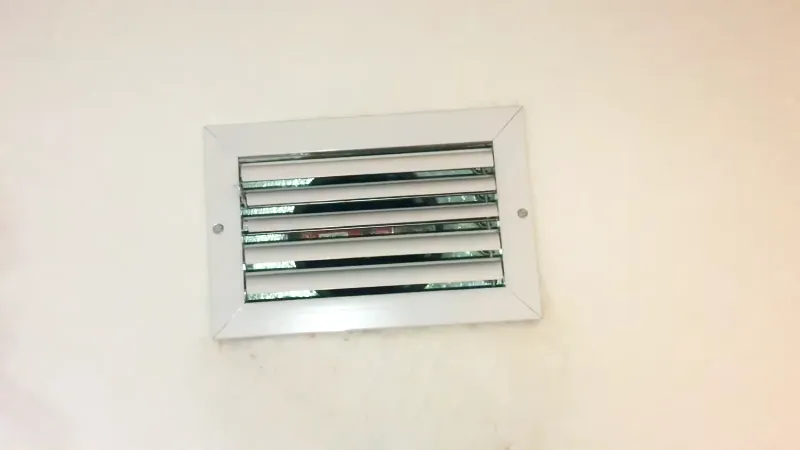
Clean and Maintain the Air Conditioning System
Regular cleaning and maintenance of air conditioning systems can help to prevent the growth of black mold. This may involve removing dust, dirt, and debris from the ducts, cleaning the air conditioning coils, and ensuring that the system is properly ventilated
Control Humidity Levels
Controlling humidity levels in the home can also help to prevent the growth of black mold in air conditioning systems. This may involve using a dehumidifier, ensuring that the home is well-ventilated, and fixing any leaks or sources of condensation
Repair Leaks and Water Damage
Repairing leaks and fixing any water damage can also help to prevent the growth of black mold in air conditioning systems. This may involve fixing faulty ductwork, replacing damaged insulation, and addressing any other sources of water infiltration
Replace Contaminated Ducts
If black mold has already taken hold in air conditioning ducts, it may be necessary to replace the contaminated ducts to prevent further growth and spread. This should only be done by a professional, as removing contaminated ducts can release mold spores into the air, which can be harmful to human health
Use Mold Inhibitors
Using mold inhibitors in air conditioning systems can also help to prevent the growth of black mold. These products contain compounds that inhibit the growth of mold and can be added to the air conditioning system to help keep it free of mold
Black mold in air conditioning vents is a serious issue that can pose a significant risk to human health. To prevent the growth of black mold, it is important to maintain good hygiene and cleaning practices, control humidity levels, repair leaks and water damage, and use mold inhibitors. If black mold has already taken hold in air conditioning ducts, it may be necessary to replace the contaminated ducts and seek the assistance of a professional.
Can Mold in Ac Make You Sick?
There is high chance of mold in ac causing your house to become the best house. Mold in AC may have a lot of adverse effects. In some cases, mold can cause the ac to be the best ac. Here are some of the effect of mold in air conditioner and you can get them solved.
Infections
Mold can cause a variety of infections in your body such as colds, pneumonia, lung, and urinary infections.
Health Problem
Mold can cause a variety of health problems, but it is very important to keep the house clean, make it dry, and clean the air of mold regularly.
Itchy Eyes
Mold can cause your eyes to itch a lot.
Itchy Skin
Mold can cause your skin to itch so that you will need to have to itch for long time.
Sinus Issues
Mold can cause your sinus to be infected because mold may cause a lot of irritation to your sinus.
Nosebleeds
Mold may cause nose bleeding if it is big enough. You can get nosebleeds if your nose is itchy, irritated, and you are stressed.
Fungus
It can also cause fungus problems in your house.
Bad Smell
There are people who may complain about the bad smell in the house, but the real reason for the bad smell is mold.
Mold is one of the most harmful organisms. This is why it is very important to know what mold and health issues it causes. We are here to answer your questions regarding the causes and symptoms of mold in air conditioner.
You can also learn how to prevent mold in AC if you are worried.
Final Words
Mold in air conditioners is a common problem that can have serious consequences for human health and the performance of the air conditioning system. To prevent the growth of mold in air conditioners, it is important to maintain good hygiene and cleaning practices, control humidity levels, repair leaks and water damage, and use mold inhibitors.
If mold has already taken hold in air conditioning ducts, it may be necessary to replace the contaminated ducts and seek the assistance of a professional. Ignoring the problem of mold in air conditioners can lead to increased health risks, decreased efficiency, and increased wear and tear on the unit.
By taking proactive steps to prevent and address mold growth in air conditioners, individuals can ensure that their air conditioning systems remain in good condition and provide a safe and healthy indoor environment.

